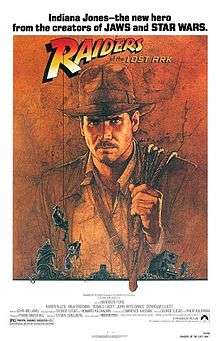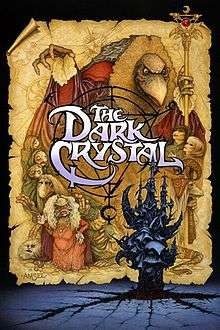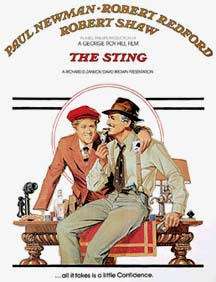Richard Amsel
Richard Amsel (December 1947 – November 17, 1985) was an American illustrator and graphic designer. His career was brief but prolific, including movie posters, album covers, and magazine covers. His portrait of comedian Lily Tomlin for the cover of Time is now part of the permanent collection at the Smithsonian Institution. He was associated with TV Guide for thirteen years.
Life and career
Richard Amsel was born in Philadelphia. While a student at the Philadelphia College of Art, his proposed poster art for the Barbra Streisand musical Hello, Dolly! was selected by 20th Century Fox for the film’s campaign after a nationwide artists’ talent search; the artist was 22 at the time.
Amsel quickly found popularity within New York's art scene, and his illustrations caught the attention of Barry Manilow, then a young singer/songwriter named who was working with Bette Midler, a newly emerging entertainer in cabaret clubs and piano bars. Manilow introduced the two, and it was quickly decided that Amsel should do the cover of her first Atlantic Records album. The cover, for The Divine Miss M proved to be one of the most ubiquitous of the year. More album covers and posters soon followed, as did a series of magazine ads for designer Oleg Cassini.
His movie posters commissions included some of the most important and popular films of the 1970s including The Champ, Chinatown, Julia, The Last Picture Show, The Last Tycoon, The Life and Times of Judge Roy Bean, McCabe & Mrs. Miller, The Muppet Movie, Murder on the Orient Express, Nashville, Papillon, The Shootist, and The Sting. (The latter's poster design paid homage to the painting style of J. C. Leyendecker, evoking both his "Arrow Collar Man" and his covers for The Saturday Evening Post.)
Though brief, Amsel's career was prolific. By the decade's end his movie posters alone matched or exceeded the creative output of many of his contemporaries. His work graced the cover of Time—a portrait of comedian Lily Tomlin, now housed in the permanent collection at the Smithsonian Institution in Washington D.C. In keeping with the magazine's stringent deadlines, Amsel's illustration was created in only two or three days.
Style
The key to his success, beyond raw talent, was the unique quality of his work and illustrative style. Amsel could perfectly evoke period nostalgia (such as The Sting and westerns such as McCabe & Mrs. Miller), while also producing something timeless and iconic, perfectly befitting both something old and something new. And however different his approach from one assignment to the other, all would bear his instantly recognizable stamp.
TV Guide
In 1972, TV Guide commissioned Amsel to do a cover featuring the Duke and Duchess of Windsor, coinciding with a telefilm about their love affair. Thus began Amsel's 13-year association with TV Guide, resulting in a record of more than 40 covers.[2]
The "Amsel covers", now prized collector's items, feature portraits of such figures as Mary Tyler Moore, John Travolta, Elvis Presley, Ingrid Bergman, Johnny Carson, Tom Selleck, Nancy Reagan, Frank Sinatra, Princess Grace and Katharine Hepburn. Particularly notable issues included Clark Gable and Vivien Leigh for the television debut of Gone with the Wind, the wedding of Prince Charles and Diana, Princess of Wales, and Richard Chamberlain for the miniseries Shogun.
Perhaps the most beloved is Amsel's portrait of Lucille Ball, done for the magazine's July 6, 1974 issue honoring the comedian's retirement from series television. "I did not want the portrait to be of Lucy Ricardo," Amsel explained, "but I didn't want a modern-day Lucy Carter either. I wanted it to have the same timeless sense of glamour that Lucy herself has. She is, after all, a former Goldwyn Girl. I hoped to capture the essence of all this."[3]
Amsel's work so impressed Ms. Ball that the artwork was featured in the opening credits of a two-hour television tribute, CBS Salutes Lucy: The First 25 Years.

Later career

The 1980s marked a dramatic change in movie marketing campaigns, with more and more employing photographs in favor of illustrations. Movie poster artists now faced a narrower field in which to compete, often limited to science fiction, fantasy, and adventure films. The old masters like Bob Peak—whose bold, striking campaigns for Camelot, Star Trek: The Motion Picture, Superman, and Apocalypse Now helped redefine the very nature of movie poster art—seemed increasingly dated in their style, and had to make way for a new generation of artists (notably Drew Struzan).
Yet Amsel remained productive, his trademark signature becoming a widely recognizable fixture on further magazine covers and movie posters, including such high profile, "event" films as the colorful, campy Flash Gordon, and the elaborate fantasy The Dark Crystal. But perhaps his work for the adventure film Raiders of the Lost Ark[1] remains the artist’s most famous. Amsel did two separate posters, one for the film’s initial 1981 release and another for its re-release a year later; George Lucas and Steven Spielberg reportedly own the originals, respectively.
With his "Raiders" art Amsel has, in his own words, "accomplished something". "Commercial art can be and sometimes is art, but if someone hangs a poster, it is still a poster pretending to be something it's not. My work is basically for the printed page, and not for hanging in living rooms... If, however, I paint or draw something that takes people into the realm of fantasy, then I feel that I've accomplished something."[3]
Death
His last film poster was for Mad Max Beyond Thunderdome, the third of George Miller's apocalyptic action movies with Mel Gibson.
His final completed artwork was for an issue of TV Guide, featuring news anchors Tom Brokaw, Peter Jennings and Dan Rather. Amsel died less than three weeks later, succumbing to complications from AIDS on November 17, 1985.
When he fell ill, he was to have done the poster for the Romancing the Stone sequel, The Jewel of the Nile.
Recognition
Amsel's output garnered numerous awards, from the New York and Los Angeles Society of Illustrators, a Grammy Award, a Golden Key Award from The Hollywood Reporter, and citations from the Philadelphia Art Director's Club. Representations of Amsel's covers were exhibited at the Museum of Television and Radio in Beverly Hills, commemorating TV Guide's fortieth anniversary.
In 2009, Amsel was posthumously awarded the University of the Art's Silver Star award for Outstanding Alumni. The award was accepted on his behalf at The University of the Arts Commencement Ceremony by his brother, Michael Amsel.
In January 2016, a feature film documentary on Amsel's life and career was announced, tentatively titled "Amsel: Illustrator of the Lost Art".[4]
See also
Similar artists
References
- 1 2 3 Academy of Motion Picture Arts and Sciences, Margaret Herrick Library catalog Richard Amsel
- ↑ This is not unlike Leyendecker's record for The Saturday Evening Post.
- 1 2 Portraits in Stardust: The art of Richard Amsel, Star Notes magazine, Spring 1993
- ↑ http://www.richardamselmovie.com
External links
- The Richard Amsel Appreciation Site
- Official website of the documentary feature "Amsel: Illustrator of the Lost Art"
- Academy of Motion Picture Arts and Sciences, Margaret Herrick Library Catalog Richard Amsel
- McDaniel, Adam: The Art & Artistry of Richard Amsel, biography and tribute
- Lucyfan.com, Portraits in Stardust: The art of Richard Amsel, Star Notes magazine, Spring 1993
- Movieposterdb.com - Select listing of Richard Amsel's art
- American Art Archives - Select listing of Richard Amsel's art
- Internet Movie Poster Awards - Select listing of Richard Amsel's art
- Barbra Streisand art by Richard Amsel
- "Lucy" art by Richard Amsel
